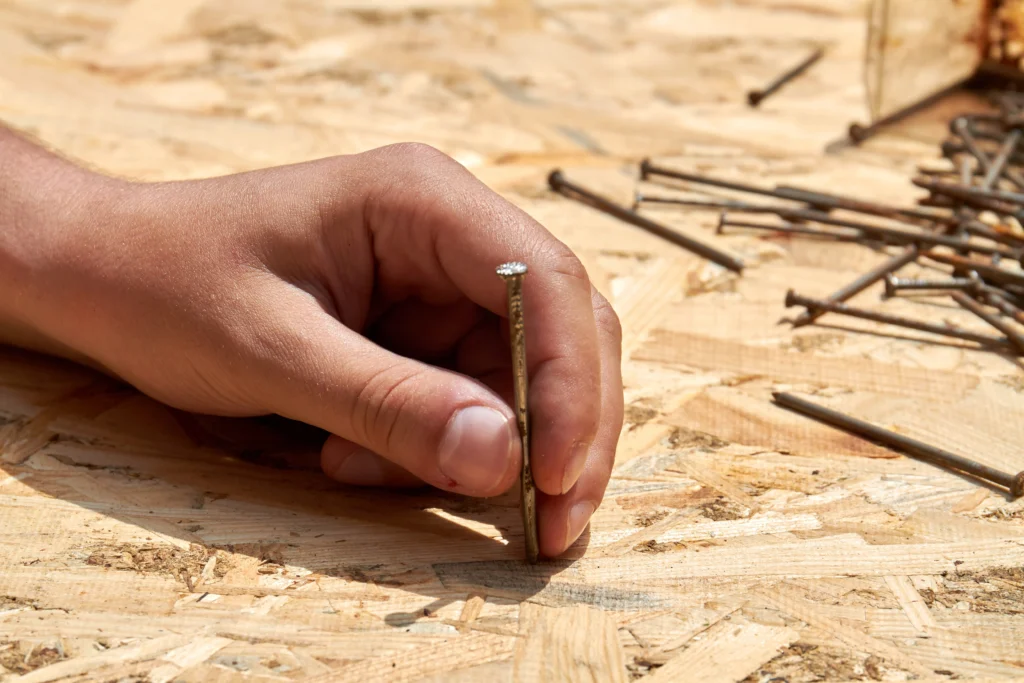One of the most overlooked components of a roofing job is also one of the most important: the nails. Whether you’re replacing a few shingles or installing an entirely new roof, choosing the right fasteners is crucial to long-term performance and weather resistance. So if you’re wondering what size nails for roofing projects are best—the answer depends on several key factors, including the roofing material, local codes, and the structure of the roof itself.
Let’s explore everything you need to know about nail sizing, why it matters, and how proper installation protects your home from costly damage down the line.

Why Nail Size Matters in Roofing
Roofing nails don’t just hold shingles in place. They anchor the entire roofing system to your home’s sheathing and, by extension, to the framing structure. Use the wrong size, and you could face issues such as:
- Shingles lifting in high winds
- Nails penetrating too deeply or not enough
- Increased risk of roof leaks
- Shortened roof lifespan
Professional inspectors at Icon Home Inspectors often identify premature roof failures caused by improper nailing—especially on DIY projects or low-quality installations.

Standard Roofing Nail Length
The most commonly used roofing nails are 1¼ inches long, which is appropriate for securing asphalt shingles to standard ⅜-inch or ½-inch roof decking. However, the International Residential Code (IRC) requires that nails penetrate at least ¾ of an inch into the roof decking, or completely through if it’s less than ¾-inch thick.
So, the size of your decking matters. Here’s a general guideline:
- ⅜” decking – Use 1¼” nails
- ½” decking – Use 1¼” to 1½” nails
- 5/8″ or 3/4″ decking – Use 1½” nails or longer
If underlayment or additional materials are added (like rigid foam insulation), the required nail length increases accordingly.
Roofing Nail Gauge and Shank Types
In addition to length, the gauge and type of nail shank also play a role in performance:
- Standard roofing nails are typically 11- or 12-gauge
- Smooth shank nails are easy to drive and remove but less resistant to pull-out
- Ring shank nails offer stronger grip and are better suited for high-wind areas
- Screw shank nails are used for added resistance in hurricane-prone zones
For Ohio’s variable weather conditions, galvanized ring shank nails are often the best combination of durability and corrosion resistance.

Material Type: Steel, Galvanized, or Aluminum?
Most quality roofing nails are made of galvanized steel because they resist rust and corrosion. This is especially important for long-term durability in areas exposed to snow, rain, and temperature fluctuations—like Northeast Ohio.
Other types include:
- Stainless steel nails – Ideal for coastal or high-moisture environments
- Copper nails – Used for specialty roofing like slate or tile
- Aluminum nails – Lightweight but less common due to corrosion issues
Icon Home Inspectors has found that many roof problems in older homes stem from the use of inappropriate or rust-prone nails—something a qualified inspector can spot quickly.

Nail Size for Specific Roofing Materials
Different roofing types require different nails. Here’s how sizing varies:
- Asphalt shingles – Usually 1¼” to 1½” galvanized nails
- Wood shingles – May require 1¾” or 2″ nails
- Metal roofing – Uses screws more often than nails, typically 1″ to 2″ self-drilling screws
- Slate or tile – Requires specialty nails (copper or stainless steel), sized 2″ or longer
Roofing professionals choose nail length based on the total thickness of the roofing layers being penetrated—including shingles, underlayment, and decking.
Local Building Codes and Manufacturer Requirements
Before selecting nails, it’s important to check local building codes and the manufacturer’s warranty guidelines. Using the wrong nail size or type could void the warranty on your shingles or result in building code violations.
For example, GAF, one of the top roofing material manufacturers, specifically outlines acceptable nail sizes and patterns in their installation instructions. You can review those here.

Nail Quantity and Placement
Roofers typically use four nails per shingle in standard installations, and six nails per shingle in high-wind areas or steep-slope roofs. That adds up to thousands of nails per roof, making correct size and placement a serious quality control issue.
Professional inspectors like those at Icon Home Inspectors know where to look for nail-related installation errors—including nails driven too deep, installed at the wrong angle, or placed too close to the shingle edge.

Roofing Nail Guns vs. Hand Nailing
While many professionals use nail guns for speed, improper use can lead to underdriven or overdriven nails. That’s why some roofers still prefer hand-nailing for more control—especially on delicate or high-end roofing systems.
Regardless of the method, what matters most is that nails are:
- Driven straight
- Flush with the shingle surface
- Not tearing or damaging the shingle
- Securely anchored into the decking
A post-installation inspection is a good safeguard to catch any mistakes, and hiring an experienced contractor ensures proper technique from the start.

Conclusion
So, what size nails for roofing are best? It depends on the type of roof, the thickness of the materials, local code, and environmental conditions. In general, 1¼” to 1½” galvanized roofing nails are suitable for asphalt shingles on typical decking—but always consult manufacturer and local code requirements before getting started.
Whether you’re installing a roof or buying a home with one already in place, a proper inspection ensures nails and other critical components are up to standard. For homeowners in Northeast Ohio, Icon Home Inspectors can evaluate the integrity of your roof and help you avoid surprises after closing.